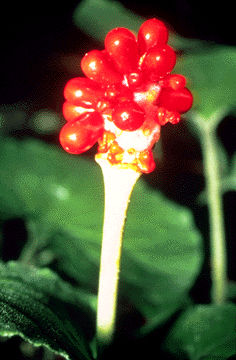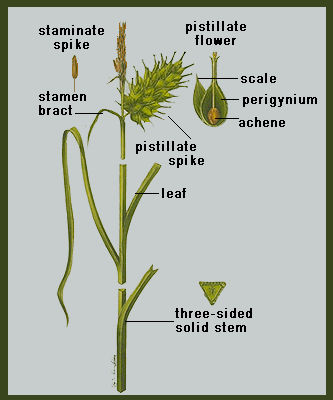Browse "Plants"
-
Article
Traditional Plants and Indigenous Peoples in Canada
Indigenous peoples in what is now Canada collectively used over a 1,000 different plants for food, medicine, materials, and in cultural rituals and mythology. Many of these species, ranging from algae to conifers and flowering plants, remain important to Indigenous communities today. This knowledge of plants and their uses has allowed Indigenous peoples to thrive in Canada’s diverse environments. Many traditional uses of plants have evolved to be used in modern life by Indigenous and non-Indigenous peoples alike. (See also Indigenous Peoples’ Medicine in Canada.)
"https://d2ttikhf7xbzbs.cloudfront.net/media/new_article_images/WildBerries/9342749963_6006fba520_z.jpg" // resources/views/front/categories/view.blade.php
https://d2ttikhf7xbzbs.cloudfront.net/media/new_article_images/WildBerries/9342749963_6006fba520_z.jpg
-
Article
Poison Ivy
Poison ivy is the common name collectively referring to a small genus (Toxicodendron) of woody perennial plants of the cashew family (Anacardiaceae). Poison ivy is closely related to and sometimes classified with the Sumacs in the genus Rhus.
"https://development.thecanadianencyclopedia.ca/images/tce_placeholder.jpg?v=e9dca980c9bdb3aa11e832e7ea94f5d9" // resources/views/front/categories/view.blade.php
https://development.thecanadianencyclopedia.ca/images/tce_placeholder.jpg?v=e9dca980c9bdb3aa11e832e7ea94f5d9
-
Article
Poisonous Plants
Toxic PropertiesToxic reactions generally are caused by chemical compounds that are produced by plants or absorbed from soil. These compounds produce undesirable physiological responses in individuals or animals.
"https://d2ttikhf7xbzbs.cloudfront.net/media/media/3118a894-b3ac-4aea-92be-4e8966b78166.jpg" // resources/views/front/categories/view.blade.php
https://d2ttikhf7xbzbs.cloudfront.net/media/media/3118a894-b3ac-4aea-92be-4e8966b78166.jpg
-
Article
Poplar
The poplar is a short-lived, deciduous, hardwood tree of genus Populus of the willow family, widely distributed in the northern temperate zone.
"https://d2ttikhf7xbzbs.cloudfront.net/media/media/62bf6280-e044-4789-abc5-84a773ec839d.jpg" // resources/views/front/categories/view.blade.php
https://d2ttikhf7xbzbs.cloudfront.net/media/media/62bf6280-e044-4789-abc5-84a773ec839d.jpg
-
Article
Potato Wart Disease
Potato wart disease, also called potato canker, is a fungal disease of potato sprouts, eyes and stolons. The disease is caused by the soil-borne fungus, Synchytrium endobioticum. Potato wart disease poses no danger to human health or food safety, but it can impact local economies as the disease can reduce yield and effect economic regulations, such as potato exports. (See also Agricultural Economics.)
"https://development.thecanadianencyclopedia.ca/images/tce_placeholder.jpg?v=e9dca980c9bdb3aa11e832e7ea94f5d9" // resources/views/front/categories/view.blade.php
https://development.thecanadianencyclopedia.ca/images/tce_placeholder.jpg?v=e9dca980c9bdb3aa11e832e7ea94f5d9
-
Article
Pulse Crops
Pulse crops are members of the family Leguminosae or Fabaceae (see LEGUME). The term "pulse crops" generally refers to those plant species harvested primarily for dry seed that is used as both human food and animal feed.
"https://d2ttikhf7xbzbs.cloudfront.net/media/media/8e804f6a-faf5-40ac-966e-493d9162961b.jpg" // resources/views/front/categories/view.blade.php
https://d2ttikhf7xbzbs.cloudfront.net/media/media/8e804f6a-faf5-40ac-966e-493d9162961b.jpg
-
Article
Ragweed
Ragweed is an annual or perennial plant of the genus Ambrosia, family Compositae or Asteraceae. Fifteen species are native to North America; 3 occur across Canada: common ragweed (A. artemisiifolia), perennial ragweed (A. coronopifolia) and giant ragweed (A. trifida).
"https://development.thecanadianencyclopedia.ca/images/tce_placeholder.jpg?v=e9dca980c9bdb3aa11e832e7ea94f5d9" // resources/views/front/categories/view.blade.php
https://development.thecanadianencyclopedia.ca/images/tce_placeholder.jpg?v=e9dca980c9bdb3aa11e832e7ea94f5d9
-
"https://development.thecanadianencyclopedia.ca/images/tce_placeholder.jpg?v=e9dca980c9bdb3aa11e832e7ea94f5d9" // resources/views/front/categories/view.blade.php
https://development.thecanadianencyclopedia.ca/images/tce_placeholder.jpg?v=e9dca980c9bdb3aa11e832e7ea94f5d9
-
Article
Reforestation
Many people believe a new sapling must be planted to replace every tree that is harvested. In fact, the FOREST regenerates naturally. After logging, young shoots grow and develop quickly because they have more room and good exposure to sunlight.
"https://development.thecanadianencyclopedia.ca/images/tce_placeholder.jpg?v=e9dca980c9bdb3aa11e832e7ea94f5d9" // resources/views/front/categories/view.blade.php
https://development.thecanadianencyclopedia.ca/images/tce_placeholder.jpg?v=e9dca980c9bdb3aa11e832e7ea94f5d9
-
Article
Rhododendron
Rhododendron [Gk, "red tree"] is a large genus (700 species) of the heath family (Ericaceae) found in the Northern Hemisphere; 4 species are native to Canada. The genus contains both rhododendrons, usually evergreen, and azaleas, which are deciduous.
"https://development.thecanadianencyclopedia.ca/images/tce_placeholder.jpg?v=e9dca980c9bdb3aa11e832e7ea94f5d9" // resources/views/front/categories/view.blade.php
https://development.thecanadianencyclopedia.ca/images/tce_placeholder.jpg?v=e9dca980c9bdb3aa11e832e7ea94f5d9
-
Article
Rose
Rose is a common name for members of genus Rosa of the rose family (Rosaceae). This large family, comprising more than 100 genera and 2000-3000 species, includes plants as diverse as strawberries, almonds and pears.
"https://development.thecanadianencyclopedia.ca/images/tce_placeholder.jpg?v=e9dca980c9bdb3aa11e832e7ea94f5d9" // resources/views/front/categories/view.blade.php
https://development.thecanadianencyclopedia.ca/images/tce_placeholder.jpg?v=e9dca980c9bdb3aa11e832e7ea94f5d9
-
Article
Sagebrush
The greatest variety of native sagebrushes occurs in the western mountains, where species that range from Alaska to California and Colorado are found. Several species range across the prairies and 2 species are transcontinental in Canada. Sagebrushes grow on dry plains, hills and rocky slopes.
"https://development.thecanadianencyclopedia.ca/images/tce_placeholder.jpg?v=e9dca980c9bdb3aa11e832e7ea94f5d9" // resources/views/front/categories/view.blade.php
https://development.thecanadianencyclopedia.ca/images/tce_placeholder.jpg?v=e9dca980c9bdb3aa11e832e7ea94f5d9
-
Article
Saxifrage
Flowers, mostly small, commonly white or yellow, are borne as terminal clusters on hairy stalks. Plants form tufted, spreading cushions, frequently giving striking patches of colour. S.
"https://development.thecanadianencyclopedia.ca/images/tce_placeholder.jpg?v=e9dca980c9bdb3aa11e832e7ea94f5d9" // resources/views/front/categories/view.blade.php
https://development.thecanadianencyclopedia.ca/images/tce_placeholder.jpg?v=e9dca980c9bdb3aa11e832e7ea94f5d9
-
Article
Seaweeds
Seaweeds are multicellular marine algae, visible to the naked eye. They extend from the uppermost reaches of sea spray on the shore to the lower limits of light beneath the surface of the water.
"https://d2ttikhf7xbzbs.cloudfront.net/media/media/7fef297e-e301-4ad4-8cc1-d64bd2f9e902.jpg" // resources/views/front/categories/view.blade.php
https://d2ttikhf7xbzbs.cloudfront.net/media/media/7fef297e-e301-4ad4-8cc1-d64bd2f9e902.jpg
-
Article
Sedge
Sedge is a grasslike plant common throughout temperate and cold regions. The genus name, Carex (family Cyperaceae), is probably derived from keiro, referring to the sharp leaf margins.
"https://d2ttikhf7xbzbs.cloudfront.net/media/media/e54d9ac1-e557-4493-aa21-0155fa62dd38.jpg" // resources/views/front/categories/view.blade.php
https://d2ttikhf7xbzbs.cloudfront.net/media/media/e54d9ac1-e557-4493-aa21-0155fa62dd38.jpg
